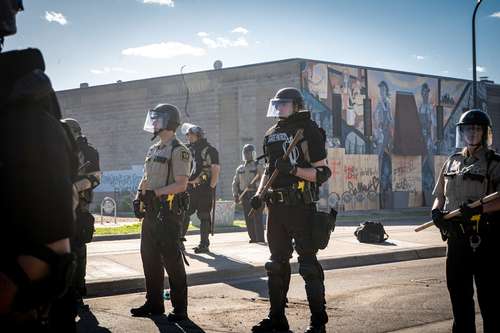Street lighting may help rather than hinder vehicle crime

Vehicle crime is twice as high on roads where street lights are left on after midnight, according to a study
You may believe that parking your automobile under a bright street light will deter a criminal from attempting to break into it, but the opposite may be true.
According to a new study, automobiles that are well lit all night are twice as likely to be broken into than those whose lights are turned off after midnight.
According to the study, turning off the lights on one street resulted in an increase in vehicle crime on other streets where the lights were left on all night.
This shows that some offenders prefer to target cars on well-lit roadways.
From April 2004 to September 2013, the study team, led by the London School of Hygiene & Tropical Medicine (LSHTM) and University College London (UCL), looked at crime data from Thames Valley Police as well as data on changes to street lighting in local authorities in Oxfordshire, Reading, and West Berkshire.
In contrast to earlier research, the changes to street lighting were made by reducing rather than increasing the amount of light available.
"The reason we did this research is that many local authorities in the UK have introduced part-night lighting on quiet, urban residential roads and rural roads that have very little use after midnight, to save energy costs and reduce carbon emissions," said Dr. Phil Edwards, of LSHTM and LANTERNS Project Leader. However, there have been concerns expressed about the policy's safety.
"According to a previous study, turning off street lights at night does not increase crime." According to a new study, turning off street lights between the hours of midnight and 6 a.m. may actually lower some types of crime."
"We didn't set out to identify the causes for the observed changes," Dr. Edwards explained, "but it's likely that when lights are turned off after midnight, offenders believe the costs of committing a crime, such as using a torch that would raise suspicion among neighbors, outweigh the advantages."
"When the lights go off after midnight, the streets are likely to be in near darkness, making it difficult for would-be criminals to see if there are any expensive products left unsecured in vehicles, thus criminals may prefer to travel elsewhere to carry out their plans."
"Research studies like this can help us better understand crime and security challenges," said Professor Shane Johnson, Director of the Dawes Centre for Future Crime at UCL and Deputy Head of Department at the UCL Department for Security and Crime Science.
According to the data, energy-saving street lighting changes have not increased crime in the streets investigated. This is really positive, but it's crucial to remember that this does not imply that it will be the case in all circumstances, so illumination adjustments should be handled with caution."
'However, there have been safety concerns expressed regarding this strategy.
Turning off street lights at night has little impact on crime
Previous study has shown that turning off street lights at night has little impact on crime.' According to a new study, turning off street lights between the hours of midnight and 6 a.m. may actually lower some types of crime.'
There were 283,275 offenses over the ten-year study period, with 79,000 (28%) being automobile offences.
After accounting for underlying long-term and seasonal trends in crime, the researchers discovered that part-night lighting (PNL), in which street lights are turned off between midnight and 5 a.m., significantly reduces car theft.
Car break-ins reduced from an average of 12 per month per street before PNL to 6 per month per street after PNL was implemented.
There was also evidence of a reduction in night-time vehicle crime compared to day-time crime for roadway segments with dimmed lighting, however the effect was less substantial than for PNL.
The researchers found no indication that white lighting was linked to changes in any of the types of nighttime crime they studied.
The reduction in car break-ins on roads with PNL was accompanied by a 1.5-fold increase in vehicle crime on adjoining streets where the illumination was left on all night.
However, fewer crimes were 'displaced' to these surrounding regions, resulting in a net decrease in crime. Vehicle thefts decreased as well, albeit this was not statistically significant.
There was no indication that changes in lighting were linked to changes in violent crime, robbery, or home burglary.
Dr Lisa Tompson, who completed the research at UCL and is now located at The University of Waikato in New Zealand, said, "The study findings imply that energy saving street lighting changes have not increased crime in the streets surveyed."
'While this is positive, it is crucial to stress that it does not imply that this will be the case in all circumstances, and that lighting adjustments should be handled with caution.'
The purpose of the study was not to determine the causes of the observed changes, but Dr. Edwards speculated that offenders may believe that the costs of committing a crime exceed the advantages.
They may believe, for example, that using a torch will arouse suspicion among residents.
'After midnight, the streets are likely to be in near darkness, making it difficult for any would-be offenders to detect if there are any valuable products left unsecured in vehicles, so offenders may prefer to travel elsewhere to carry out their objectives,' he said.
The authors note the study's limitations, such as the fact that the findings are for only one of the 43 UK police force areas, and so may not be generalizable to the national level.
Furthermore, the exact time of an offence was unknown in certain crime reports, thus some vehicle offenses could have occurred before or after the lights were turned on again.
'People's use of space is complicated and multifaceted.
'This research examines a portion of the picture, and its important findings are only one piece of a larger puzzle.' This should not, however, be viewed as a "one-size-fits-all" approach.
'The report also failed to acknowledge the impact that poor illumination has on the elderly and other vulnerable members of society, such as their fear of crime and apprehension about leaving their homes at night.'
Share this article
Author
Related Posts

Trump Escalates Greenland Bid: 10% Tariffs Hit EU Allies in 'Greenland Crisis'

Trump Greenland Tariffs 2026: Global Markets Crash as Trade War Escalates

Trump Issues Global Tariff Ultimatum in Escalating Greenland Takeover Crisis
